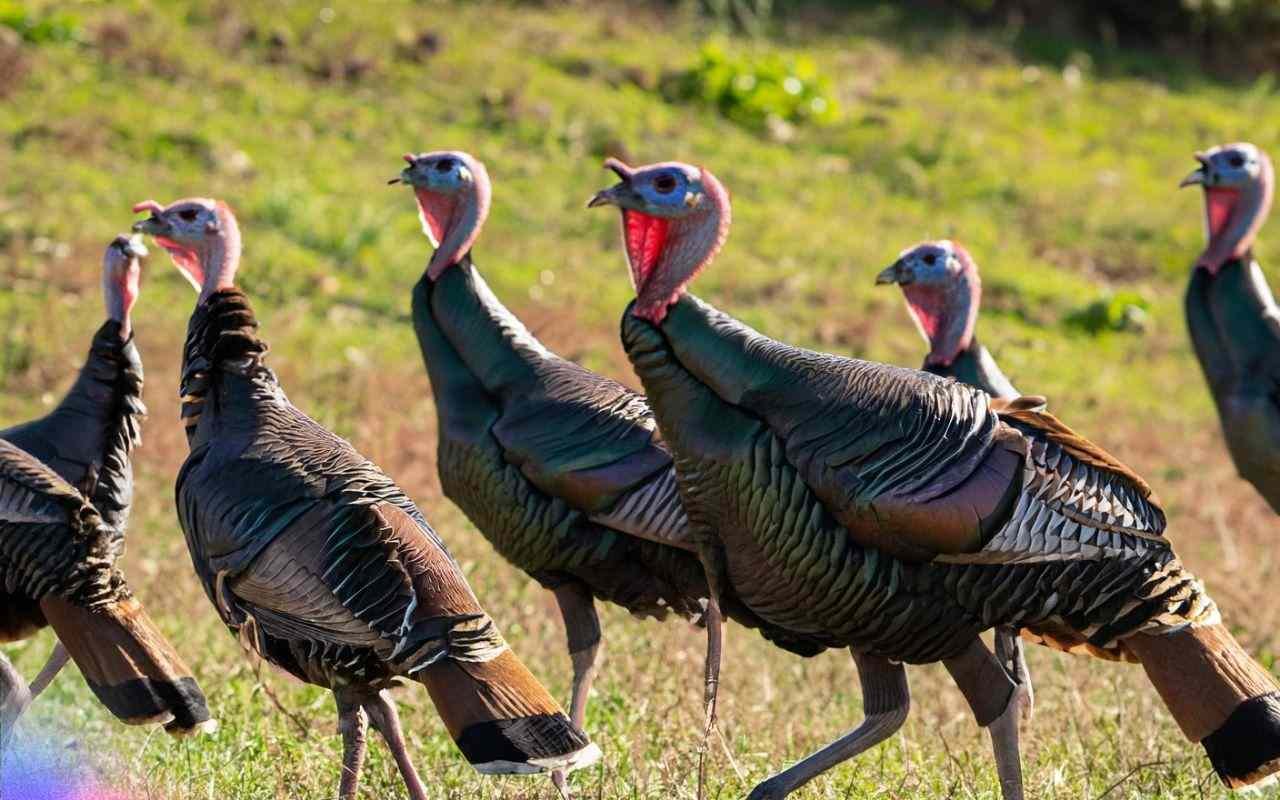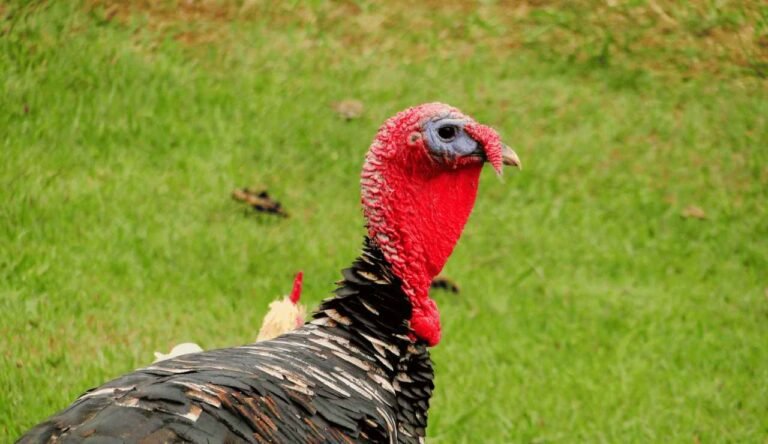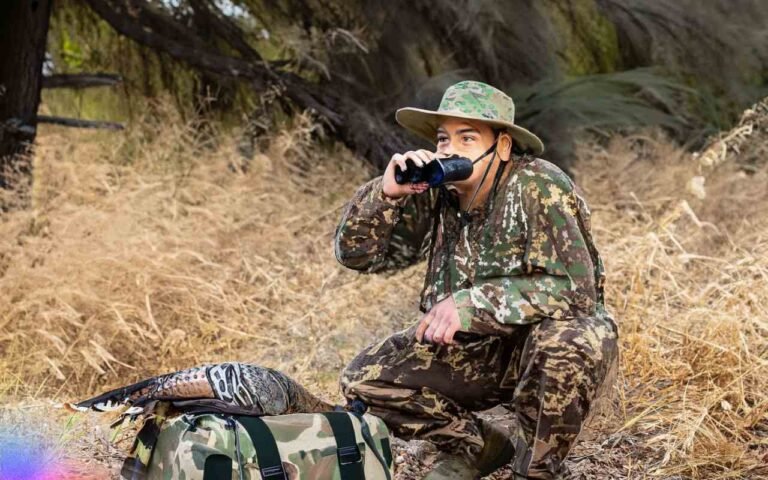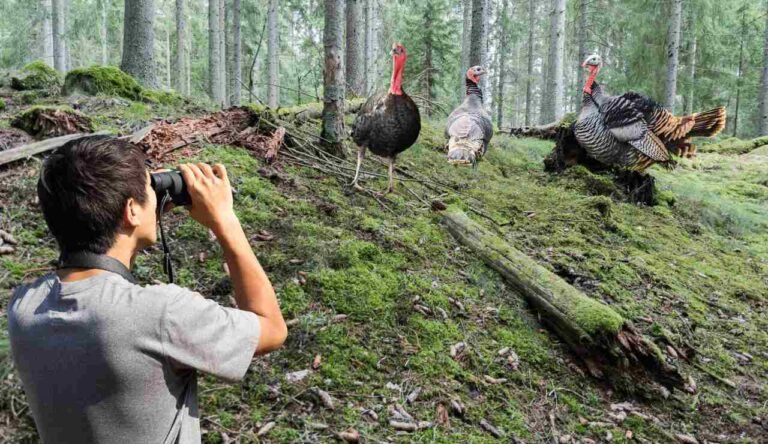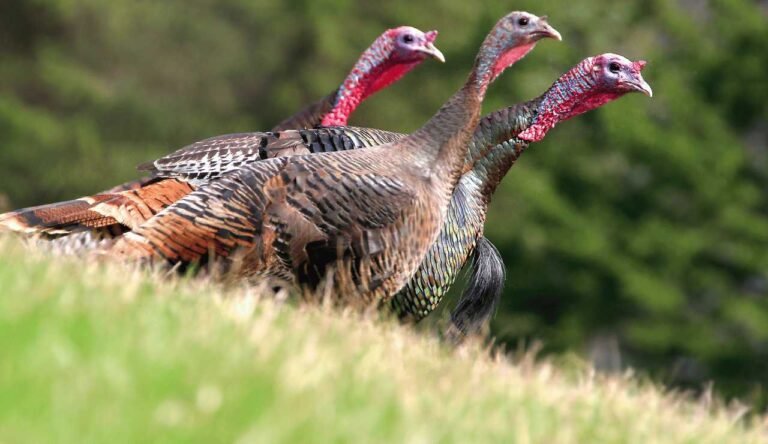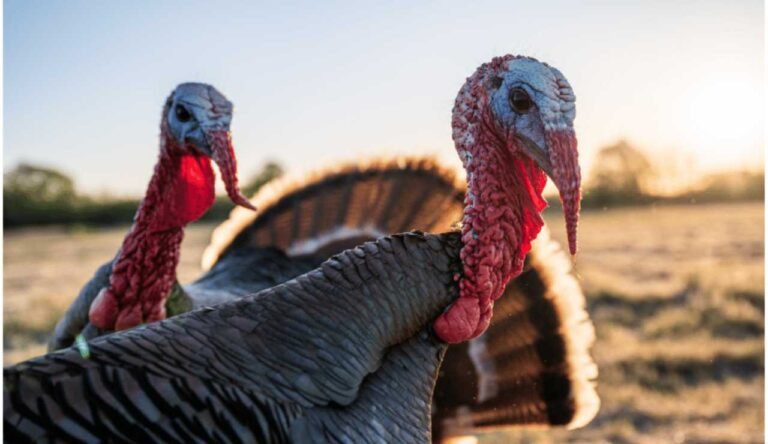Wild Turkey Behavior: 🦃Insights into Feeding🌿, Roosting, and Communication! Unraveling the Habits & Patterns of Wild Turkeys
Wild turkeys are intriguing creatures who display a variety of behaviors in their everyday activities. Key insights into the requirements and habits of wild turkeys may be gained by understanding their eating behaviors, mobility patterns, communication styles, and social dynamics. Additionally, attempts to conserve these birds’ distinctive habitats and behavioral traits would greatly benefit from this understanding. Explore wild turkey behavior with us and learn more about these intriguing birds that have fascinated ornithologists and wildlife lovers.
The Fascinating Behavior of Wild Turkeys
The behaviors that wild turkeys exhibit to hunt food, establish dominance, avoid predators, and raise young are many and varied. Meeting their fundamental requirements for food, safety, and reproduction drives their daily routines and seasonal habits. Understanding the subtleties of wild turkey behavior helps us comprehend their function in natural habitats.
Researchers can determine the best ecological conditions and possible dangers by observing the wild turkeys’ eating, roosting, grooming, and vocalization habits. This information was essential for reintroduction initiatives and conservation measures targeted at rebuilding robust wild turkey populations when populations decreased in the early 20th century as a result of overhunting and habitat destruction. Ornithologists and wildlife enthusiasts are still fascinated by their flexibility and toughness today.
Wild Turkey Behavior Highlights
| Behavior | Description |
|---|---|
| Grooming | Wild turkeys clean their feathers using their beaks. |
| Dust Bathing | Wild turkeys roll in mud and flap their wings to clean and eliminate parasites. |
| Gobbling | Gobbling attracts female turkeys and deters other males. Its loud, booming sound may be heard for kilometers. |
| Strutting | Male turkeys flutter their tails, stretch their wings, and drop their heads to attract females, purring and clucking. |
| Roosting | Wild turkeys roost in trees at night, either alone or in groups. |
| Foraging | Wild turkeys feed on plants, insects, and small animals. |
| Nesting | Female turkeys lay eggs and raise their young in ground nests concealed amid thick foliage. |
| Mating Display | Male turkeys strut, gobble, and puff their feathers during mating season. |
| Social Hierarchy | Dominant wild turkeys lead flocks and receive early access to food. |
| Seasonal Movement | When food and breeding become scarce, wild turkeys may migrate. |
| Parental Care | Female turkeys incubate their eggs and direct their offspring to food and shelter until they can fend for themselves. |
Feeding Habits of Wild Turkeys
Younger poults, older juveniles, and adult wild turkeys have quite different eating habits from those of the smaller poults. Their diet vary with the seasons as food sources change.
| Age Group | Diet |
|---|---|
| Poults | Insects (beetles, grasshoppers, etc.) |
| Juveniles | Seeds, berries, acorns, plant foods |
| Adults | Omnivorous, incl. insects and plants |
Foraging Behavior of Poults
Insects rich in protein are an important source of nutrition for growing poultry. Poults must consume beetles, grasshoppers, spiders, and caterpillars throughout their first weeks and summer. Poults need nutrient-rich food sources since they grow fast, gaining around 0.5 oz each day.
Insect-rich meadows, woodland clearings, and field borders are where mother hens direct their chicks. To catch insects on the ground and in low vegetation, chicks utilize their keen eyesight and hearing. This diverse bug-filled diet supplies the vital minerals and amino acids required for proper growth.

Transition to Plant Foods as Juveniles and Adults
Poults gradually increase their consumption of seeds, berries, acorns, and other plant foods as they develop into juveniles and adults. Wild turkeys grow increasingly omnivorous as they become older, yet insects still serve as vital sources of fat and nutrition.
Berries, grasses, legumes, beech, hickory, and oak nuts, and herb and agricultural crop greens are favorite plant meals. Wild turkeys can adjust to seasonal changes in food supply thanks to their varied diet. In the autumn and winter, when other meals are in short supply, hard mast like walnuts and acorns become especially crucial.
Daily Movement and Habitat Use
Habitat quality, flock makeup, and seasonal conditions all affect wild turkeys’ home ranges and wandering habits. Their environmental choices and movement have a direct influence on survival and reproduction.

Walking Patterns and Distance
Adult male turkeys may search for receptive hens over two kilometers each day during mating season. Rarely do hens with chicks move more than 0.5 kilometers each day. A perfect environment with enough of supplies enables flocks to satisfy their demands in a more condensed region, minimizing risky long-distance travels.
Wild turkeys may travel ten miles or more during seasonal migrations in search of better eating and breeding areas when their environment is insufficient. During the winter, when energy conservation takes priority over food availability, flocks often migrate less.
Roosting Behavior and Habitat Selection
Predators are kept at bay when roosters spend the night in trees. Due to their horizontal branching patterns, mature hardwood trees offer excellent roosting locations. If a roost tree is left alone, groups may utilize it for many years.
Until they are around 4 weeks old, when they can fly up onto trees, young birds rest on the ground or in low bushes. According on tree size, adult gobblers, hens, and young birds roost 20–60 feet above. To make it easier to lead pups, females with broods will roost lower.
Open forests close to pastures, meadows, and croplands are preferred roosting and feeding habitats for these animals. It is also advantageous to be close to water sources. The sparse understory vegetation in thick forests is avoided by wild turkeys.
| Roosting Habitats | Roost Height (above ground) |
|---|---|
| Mature Hardwood Trees | 20–60 feet |
| Ground (Poults) | Until 4 weeks old |
| Females with Broods | Lower for ease of leading |
Vocalizations for Communication
The variety of cries made by wild turkeys helps flocks communicate effectively. Vocalizations aid in establishing hierarchy, coordinating movement, alerting to danger, and luring mates.
Calls and Sounds
There are at least 25 different turkey calls known. The social behaviors of clucks, purrs, yelps, and cutts include keeping contact and reinstating flocks. Gobbles are loud cries that function as invitations to mate and help men find one another.
To communicate with their chicks, hens make sounds like yelps, clicks, and clucks. The putt and other alarm cries warn others of the danger. Fighting purrs, happy yelps, and gobbler yelps are all ways that cats express various types of hostility.
| Communication Types | Examples of Calls/Sounds |
|---|---|
| Social Behaviors | Clucks, purrs, yelps, cutts |
| Mating Invitations | Gobbles |
| Hen Communication | Yelps, clicks, clucks |
| Alarm Calls | Putt and other warning cries |
| Aggressive Behaviors | Fighting purrs, happy yelps, gobbler yelps |
Social Structure
The dominant members in a flock lead movements and get first access to food sources according to a pecking order. via combative behaviors like chest-bumping and fighting, which are expressed via postures and vocalizations, the social order is maintained.
Male juveniles establish authority by competition, whereas mature males do so through size and frequency of gobbling. The stronger birds breed more often and benefit from group protection.
Grooming and Health Maintenance
Every day, wild turkeys spend time engaging in crucial grooming and maintenance behaviors. They maintain their plumage in top shape thanks to these ingrained habits.
| Grooming Behaviors | Purpose |
|---|---|
| Dusting | To remove excess oil and parasites, aids in preening |
| Sunning | Reduces external parasites like ticks and lice |
| Preening | Straightens, separates, and smoothes feathers, spreads oils |
Dusting and Sunning
Turkeys frequently take a dust bath to groom themselves and provide their feathers nourishing oils. Dusting aids in getting rid of extra oil and parasites that might damage their feathers’ ability to insulate and waterproof.
External parasites like ticks and lice and dangerous microorganisms are also reduced by sun exposure. In order to optimize their sun exposure, wild turkeys must extend their wings.
Preening
Wild turkeys methodically straighten, separate, and smooth their feathers by preening with their beaks. They preen to spread the protective oils produced by their uropygial gland throughout their feathers. The multilayer structure and functionality of their feathers are maintained by this routine brushing.
Wild turkeys must maintain their feathers properly to be warm and dry, which is essential for surviving the environment. This includes dusting, sunbathing, and preening. Additionally, it facilitates the movement required for eating, avoiding danger, and mating rituals.
Conclusion
Investigating the distinctive behaviors of wild turkeys reveals intriguing details about their intellect and adaptability. Understanding their behavioral patterns and motives is crucial as we work to sustain the health and vibrancy of the regional turkey populations. If we respect their feeding, roosting, vocalization, grooming, and social standards, we can coexist with these wonderful birds. For the benefit of wild turkeys far into the future, continuing conservation and habitat enhancement should be encouraged by their complex behaviors and dependence on particular ecosystems.
Frequently Asked Questions
What time of day are wild turkeys most active?
Wild turkeys are most active in the early morning and late evening when they leave their roosts to start foraging and return to them at night. Most of them take a nap during the midday.
How do wild turkeys care for their young?
For many months, mother hens stay with their chicks, guiding them to food sources and keeping an eye out for predators. To learn how to survive, the chicks closely mimic the hen’s noises and motions.
Do wild turkeys migrate?
Some wild turkey populations travel up to 10 miles between their winter and summer homes. If resources permit, some individuals stay within their year-round home range.
What’s the purpose of the male’s gobble call?
Wild turkey males gobble to entice ladies for mating and to let other males know they are there. Furthermore, gobbling demonstrates dominance.
How do wild turkeys find food in winter?
Wild turkeys rely primarily on acorns and other hard mast that have fallen to the forest floor over the winter. Additionally, they scavenge in agricultural areas for grass and discarded waste grain seeds.
What predators target wild turkeys?
Wild turkeys are preyed on by coyotes, bobcats, great horned owls, golden eagles, hawks, and falcons. These predators threaten turkeys and their poults throughout North America. Wild turkeys must also watch out for feral dogs and cats, snakes, and foxes.
Do wild turkeys groom themselves?
Wild turkeys do take great care to keep themselves clean. To get rid of parasites and maintain healthy feathers, they regularly dust bathe, sun, and preen their feathers.
What trees do wild turkeys prefer to roost in?
Good roost locations include mature oak, beech, pine, and maple trees. Turkeys can find a secure location to spend the night off the ground thanks to their big branches and open canopy.
- Florida Turkey Season 2025-2026: Latest Hunting Dates, Licenses & Rules Available! - October 16, 2025
- Delaware Turkey Season 2025-2026: [Everything You Need to Know Dates, Regulations, Bags & More] - October 16, 2025
- Connecticut Turkey Season 2025-2026: [Dates, Regulations, Bag Limits & More] - October 16, 2025 >
